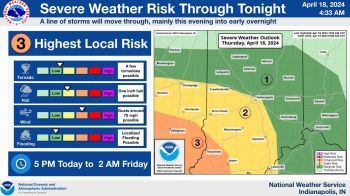GENEVA, Switzerland. — Astronomers have confirmed the existence of Proxima b, an Earth-size exoplanet orbiting the closest star to our sun.
The European Southern Observatory’s High Accuracy Radial velocity Planet Searcher (HARPS) detected the planet in 2016.
The Very Large Telescope based in Chile has a new and more powerful spectrograph named ESPRESSO, so astronomers decided to use it for more precise measurements of the planet. It stands for Echelle SPectrograph for Rocky Exoplanets and Stable Spectroscopic Observations.
In fact, ESPRESSO has an accuracy more than three times the precision of HARPS — which is essentially the same instrument, just from a previous generation.
“We were already very happy with the performance of HARPS, which has been responsible for discovering hundreds of exoplanets over the last 17 years,” said Francesco Pepe, study author and University of Geneva professor in the astronomy department, in a statement.
“We’re really pleased that ESPRESSO can produce even better measurements, and it’s gratifying and just reward for the teamwork lasting nearly 10 years.”
The researchers determined that Proxima b is 1.17 times the mass of Earth — and completes an orbit around its star, Proxima Centauri, every 11.2 Earth days. The star, Proxima Centauri, is 4.2 light-years from our sun. Previously, scientists using the HARPS measurements said it was 1.3 Earth masses.
“Proxima b is a very special guy among all the known exoplanets: the closest exoplanet there will ever be to us, terrestrial in size, and within the habitable zone,” said Christophe Lovis, study coauthor and researcher in the University of Geneva’s astronomy department.
“In spite of the clear detection achieved by HARPS in 2016, it was necessary to have an independent confirmation from the new and much more powerful ESPRESSO, to lift any remaining doubts there could have been.
The study results were published last week in the journal Astronomy & Astrophysics.
Proxima b is 20 times closer to its star than Earth is to the sun. Proxima Centauri is a low-mass red dwarf star, which means that even though the planet is close to the star, it receives similar energy that Earth does from the sun.
“Finding planets around these [stars] has always been difficult because they are faint and emit most of their light in the red and infrared spectral ranges,” Lovis said. “ESPRESSO opens new possibilities for finding many other small worlds around stars very close to the Sun.”
Proxima b is located within the habitable zone of its star, meaning that liquid water, and the suggestion of life, may be possible on the planet’s surface.
However, Proxima Centauri is an active star that lashes the planet with X-rays — 400 times more than Earth receives from the sun. This could impact the chances for water and life on the planet.
Lovis is working on a new instrument called RISTRETTO which will be installed at the Very Large Telescope in Chile. It’s designed to directly detect light emitted by the planet, which will allow researchers to characterize the planet’s atmosphere and its surface composition.
“The ultimate goal is to search for molecules in the amosphere that could possibly hint at the presence of life, such as oxygen and water vapour,” Lovis said. “On the longer term, we are also building a spectrograph called HIRES for the European Extremely Large Telescope whose main goal will be to study Proxima b and similar exoplanets in the habitable zone.”
More planets in the system?
The data from ESPRESSO also revealed a second signal, although the researchers weren’t able to definitively detect what caused it.
The signal “may be caused by a planet just 30% the mass of the Earth, which was completely undetectable before,” Lovis said. This would make it the smallest planet ever measured using the radial velocity method.
This is separate from yet another planet that may be in the system.
Earlier this year, a separate study announced that researchers used the radial velocity method to trace a signal likely belonging to a super-Earth also orbiting Proxima Centauri. The potential planet was dubbed Proxima C. It completes one orbit of the star every 1,907 Earth days at distance of 1.5 AU or 1.5 times the distance from the Earth to the sun.
So there is the potential for three planets in this system, making it even more intriguing.
On Tuesday, Fritz Benedict, a senior research scientist emeritus with McDonald Observatory at The University of Texas at Austin, presented that he has used a combination of data to confirm the existence of Proxima C. The presentation was made during the 236th Meeting of the American Astronomical Society, which is being held virtually this week during the pandemic.
Benedict scanned data he took 25 years ago using the Hubble Space Telescope while studying Proxima Centauri and found a planet with an orbital period of 1,907 days. At the time he took the data, Benedict and his fellow researchers were only searching for planets with 1,000 Earth day orbits or less.
Benedict said the planet is seven time as massive as Earth, after combining his data with the study published earlier this year as well as images taken by researchers using the SPHERE instrument on the Very Large Telescope.
“Basically, this is a story of how old data can be very useful when you get new information,” Benedict said. “It’s also a story of how hard it is to retire if you’re an astronomer, because this is fun stuff to do!”













